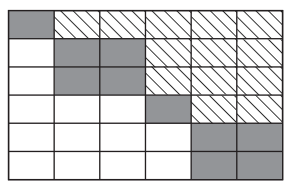ordschur
Reorder eigenvalues in Schur factorization
Description
[
reorders the Schur factorization US,TS] = ordschur(U,T,select)X = U*T*U' produced by
[U,T] = schur(X) and returns the reordered Schur matrix
TS and the orthogonal matrix US, such that
X = US*TS*US'.
In this reordering, the selected cluster of eigenvalues appears in the leading
(upper left) diagonal blocks of the quasitriangular Schur matrix TS. The leading columns
of US span the corresponding invariant subspace. The logical
vector select specifies the selected cluster as
e(select), where e = ordeig(T).
Examples
Input Arguments
Output Arguments
More About
Tips
If
Thas complex conjugate pairs (nonzero elements on the subdiagonal), then you should move the pair to the same cluster. Otherwise,ordschuracts to keep the pair together:If
selectis not the same for two eigenvalues in a conjugate pair, thenordschurtreats both as selected.If
clustersis not the same for two eigenvalues in a conjugate pair, thenordschurtreats both as part of the cluster with larger index.
References
[1] Kressner, Daniel. “Block Algorithms for Reordering Standard and Generalized Schur Forms.” ACM Transactions on Mathematical Software 32, no. 4 (December 2006): 521–532. https://doi.org/10.1145/1186785.1186787.
Extended Capabilities
Version History
Introduced before R2006a

